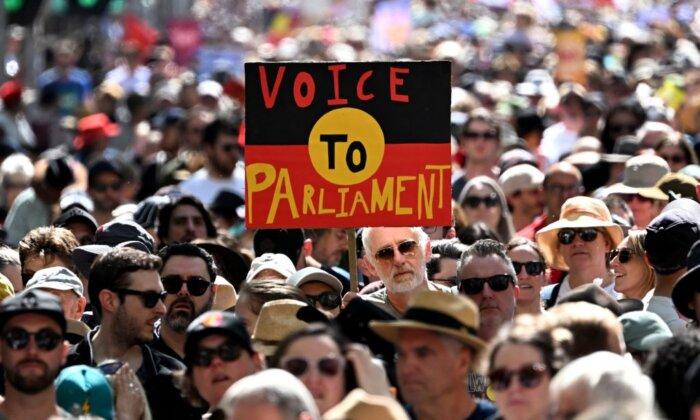New Zealand’s government is relieved—even sanguine—about the 10 percent tariff on goods exported to the United States, primary producers, however, say they are concerned.
Trade Minister Todd McClay said the 10 percent rate, compared to much higher tariffs imposed on many other countries, suggests the Trump administration views trade between the two countries as relatively balanced.
“We are no worse off than anybody else, in some cases other countries face higher tariff rates,” McClay told reporters at Parliament.
Ministers felt “relieved” at the rate that was imposed, he said, while pointing out that tariffs were still bad for trade.
He was quick to assure the media that New Zealand would not apply retaliatory tariffs, despite the actual rate of tariffs on U.S. imports averaging 1.8 percent as opposed to the 20 percent Trump claimed.
‘Liberation Day’ Shakes the World
Dubbed “Liberation Day,” Trump’s April 2 announcement revealed a global baseline 10 percent minimum tariff on about 75 countries on all goods heading into the United States.Multiple Asian nations bore the brunt of the administration’s heavier tariffs including Cambodia, which charges 97 percent tariffs on U.S. goods, Vietnam 90 percent, Sri Lanka 88 percent, Bangladesh 74, Thailand 72, China 67, Indonesia 64, and Taiwan 64.
In a White House fact sheet, the administration said they didn’t just consider formal tariffs, but “non-tariff barriers” including regulations or policies “meant to limit the quantity of imports/exports and protect domestic industries” that were deemed to deprive U.S. manufacturers reciprocal access.
“Countries including China, Germany, Japan, and South Korea have pursued policies that suppress the domestic consumption power of their own citizens to artificially boost the competitiveness of their export products.
“Such policies include regressive tax systems, low or unenforced penalties for environmental degradation, and policies intended to suppress worker wages relative to productivity,” the fact sheet said.
Further New Zealand Reaction
Some economists have speculated that the Reserve Bank of New Zealand (RBNZ), in anticipation of the possible effect of Trump’s move, may hold the Official Cash Rate (OCR) at 3.75 percent, rather than reducing it further as widely expected, when it meets on April 9.The New Zealand sharemarket fell sharply in the opening minutes of trade in response. The benchmark S&P/NZX50 Index dropped 1.1 percent to 12,187, mostly driven by a 6 percent fall in Fisher and Paykel Healthcare to $33.01.
That company—which is the market’s biggest stock—has substantial manufacturing assets in Mexico, upon which Trump has placed a 25 percent tariff.
By late morning, the New Zealand dollar had dropped by about half a U.S. cent to 56.90 cents, while the currencies of countries hit with higher tariffs were sharply down.
Foreign Affairs Minister Winston Peters said in a social media post that he had led a delegation to Washington DC “to get the best possible result for New Zealand in the circumstances, by making strong, genuine, in-person connections with the U.S. administration.”
That aim had been achieved, he said. “Indeed, New Zealand companies, who were fearing much worse, are well positioned compared to exporters from other countries.”
ACT Leader David Seymour—soon to take over from Peters as deputy prime minister—said the news was concerning.
“The margins are slim in parts of that market through competition, and 10 percent will make a difference,” he said.
“We’re looking very carefully at the development.”
Labor Opposition Say Trump Tariffs Not Justified
Opposition Leader Chris Hipkins was less enthusiastic.“It’s not going to be great for New Zealand overall,” he said, adding that “We can hand on heart say that these [tariffs] aren’t justified as in a retaliatory sense.”
His former trade minister, now shadow trade spokesperson Damien O'Connor, said the impact of tariffs means the cost of consumer goods will rise across-the-board in America, dampening demand—and the effect of this may prove to be more damaging than the 10 percent duty affecting New Zealand.
“The effect on our competitors is just as crucial as the impact on our exporters.”
He also disputed Trump’s contention that New Zealand charges 20 percent tariffs on American goods, saying that appears to include GST, which in New Zealand is 15 percent.
“It’s hard to understand how the U.S. has calculated that,” he said.
Meat Industry Concerned
Meat industry bodies were universally concerned by the potential effects of the decision.Sirma Karapeeva, chief executive of the Meat Industry Association (MIA), said they needed to take the time to “fully assess the implications of any disruption to trade flows” but added that “New Zealand red meat exporters have undertaken significant planning to mitigate potential disruptions, maintain market positions, and navigate shifts in global trade patterns.”
Chief Executive of Beef + Lamb New Zealand Alan Thomson called the decision “unfortunate.”

“It’s too early to tell what the ultimate impact of this will be on farm-gate prices,” he said. “What is positive is that we have strong demand globally at present for red meat.”
According to Stats NZ, the United States was the second-largest export destination for New Zealand goods in 2024, with a value of $9 billion, or 12 percent of the country’s total exports by value.
Meat exports were the largest contributor with $2.6 billion worth of trade, followed by dairy exports at $883 million. There is no indication at this stage that there will be any change to services exported.
New Zealand’s Pacific neighbours have been far harder-hit by today’s announcement.
Most Pacific nations were given the base tariff of 10 percent, with some higher, like Nauru at 30 percent and Vanuatu at 22 percent.
Fiji fared worst, with a 32 percent tariff imposed on its exports to the United States. A chart displayed by Trump claimed Fiji imposes a 63 percent tariff on U.S. imports and Nauru 59 percent.
Confusingly, Norfolk Island—which is not a country, and is part of Australia—had a 29 percent tariff imposed, despite Australia’s being set at 10 percent.






